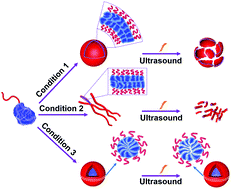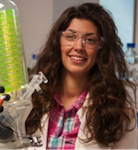 Nick Warren is a University Academic Fellow within the School of Chemical and Process Engineering at the University of Leeds. He was awarded an Masters in Chemistry from the University of Bristol in 2005 following which he conducted two years industrial research. He then moved to the University of Sheffield where he studied for a PhD in Polymer Chemistry within Prof Steve Armes’ research group where he focussed on synthesis of biocompatible block copolymers. Following his PhD, he continued as a postdoctoral researcher in Sheffield working in the area of polymerisation-induced self-assembly (PISA) until 2016, when he moved to Leeds to start his independent research career. His current research aims to exploit the latest advances in polymerisation techniques, combined with new reactor technologies for the design and discovery of controlled-structure polymers.
Nick Warren is a University Academic Fellow within the School of Chemical and Process Engineering at the University of Leeds. He was awarded an Masters in Chemistry from the University of Bristol in 2005 following which he conducted two years industrial research. He then moved to the University of Sheffield where he studied for a PhD in Polymer Chemistry within Prof Steve Armes’ research group where he focussed on synthesis of biocompatible block copolymers. Following his PhD, he continued as a postdoctoral researcher in Sheffield working in the area of polymerisation-induced self-assembly (PISA) until 2016, when he moved to Leeds to start his independent research career. His current research aims to exploit the latest advances in polymerisation techniques, combined with new reactor technologies for the design and discovery of controlled-structure polymers.
What was your inspiration in becoming a polymer chemist?
During my undergraduate masters project, I worked on development on combining pH responsive microgels with photo-responsive surfactants. I was fascinated by the ability to use chemical composition as a means of tuning physical characteristics of a material and imparting responsive behaviour. This brought on a specific interest in synthetic polymer chemistry, where there are so many synthetic routes to generating responsive materials. This was the focus of my PhD, where I gained expertise in ATRP and RAFT polymerisation which provided a convenient tool-box allowing me to design and synthesise pH responsive block copolymers.
What was the motivation behind your most recent Polymer Chemistry article?
Continuous-flow techniques are well utilised in small molecule synthesis and are now becoming commonplace in polymer chemistry. In my research group, we aim to use flow-chemistry to conduct polymer synthesis and try and exploit its characteristics to develop new materials, streamline methods for optimising polymerisation processes; or for detailed online monitoring. We have already published some work conducting PISA in flow, which combined my existing expertise in PISA, with my growing interest in reactor technologies, but it became apparent that the relatively long timescales for the reactions meant that there were limited advantages over batch synthesis. We therefore looked to speed up the process, which was relatively straight-forward since our all-acrylamide PISA system was ideally suited to Seb Perrier’s ‘ultrafast’ RAFT technology. By using flow-reactors equipped with online monitoring, we were not only able to synthesise a wide range of PISA nanoparticles on short timescales, but also obtain kinetic data despite the short reaction time.
Which polymer scientist are you most inspired by?
From a synthetic perspective, the work being undertaken in Prof Brent Sumerlin’s group encompasses many of the areas I have a keen interest. I am also inspired by Prof Tanja Junkers’ research, since she is at the forefront of work into applying automation and flow chemistry to polymer synthesis.
How do you spend your spare time?
I now have two children under 3, so I spend most of my time running around after them! We spend quite a lot of time hiking in the Peak District and I also like to cook, which has recently expanded into bread making (to varying degrees of success).
What profession would you choose if you weren’t a scientist?
I’d be a barista with a small coffee shop somewhere sunny.
Read Nick’s full article now for FREE
And if you are interested in reading more about PISA then check out our recent themed collection here
Rapid production of block copolymer nano-objects via continuous-flow ultrafast RAFT dispersion polymerisation
Ultrafast RAFT polymerisation is exploited under dispersion polymerisation conditions for the synthesis of poly(dimethylacrylamide)-b-poly(diacetoneacrylamide) (PDMAmx–b-PDAAmy) diblock copolymer nanoparticles. This process is conducted within continuous-flow reactors, which are well suited to fast reactions and can easily dissipate exotherms making the process potentially scalable. Transient kinetic profiles obtained in-line via low-field flow nuclear magnetic resonance spectroscopy (flow-NMR) confirmed the rapid rate of polymerisation whilst still maintaining pseudo first order kinetics. Gel permeation chromatography (GPC) reported molar mass dispersities, Đ < 1.3 for a series of PDMAmx–b-PDAAmy diblock copolymers (x = 46, or 113; y = 50, 75, 100, 150 and 200) confirming control over molecular weight was maintained. Particle characterisation by dynamic light scattering (DLS) and transmission electron microscopy (TEM) indicated successful preparation of spheres and a majority worm phase at 90 °C but the formation of vesicular morphologies was only possible at 70 °C. To maintain the rapid rate of reaction at this lower temperature, initiator concentration was increased which was also required to overcome the gradual ingress of oxygen into the PFA tubing which was quenching the reaction at low radical concentrations. Ill-defined morphologies observed at PDAAm DPs close to the worm-vesicle boundary, combined with a peak in molar mass dispersity suggested poor mixing prevented an efficient morphological transition for these samples. However, by targeting higher PDAAm DPs, the additional monomer present during the transition plasticises the chains to facilitate formation of vesicles at PDAAm DPs of ≥300.
About the Webwriter
 Simon Harrisson is a Chargé de Recherche at the Centre National de la Recherche Scientifique (CNRS), based at the Laboratoire de la Chimie des Polymères Organiques (LCPO) in Bordeaux, France. His research seeks to apply a fundamental understanding of polymerization kinetics and mechanisms to the development of new materials. He is an Advisory Board member for Polymer Chemistry. Follow him on Twitter @polyharrisson
Simon Harrisson is a Chargé de Recherche at the Centre National de la Recherche Scientifique (CNRS), based at the Laboratoire de la Chimie des Polymères Organiques (LCPO) in Bordeaux, France. His research seeks to apply a fundamental understanding of polymerization kinetics and mechanisms to the development of new materials. He is an Advisory Board member for Polymer Chemistry. Follow him on Twitter @polyharrisson













